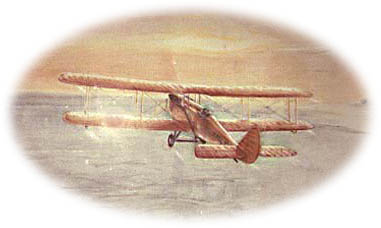
Be sure to visit the web site of The Air Mail Pioneers

Be sure to visit the web site of The Air Mail Pioneers

|
Alice's Memories of the Pilots The pilots who were friends of my father and who ate my mother's chicken dinners went on to make more aviation history: E. Hamilton Lee, David L. Behncke, and a little known pilot, Ira Biffle, who taught a young man named Charles Lindbergh to fly. A little later, a young pilot named Elrey B. Jeppeson joined their ranks. Even though I was very young and saw them briefly at both the McGirr and later Waterman airports, I recognized these friends of our family as heroes, and I remember them well. E. Ham Lee
David L. Behncke -- started Airline Pilots Association
One beautiful spring day we heard a beautiful, large, resonant engine. The plane circled the field. We knew it was special. Raced to the porch with our mouths open as large light colored airplane circled field and proceeded to land and taxi to the east edge of the field headed west. The idea was that he would have a long runway to take off. The plane carried 14 passengers in the cabin and was low wing with one engine. We were all very curious as to who was flying this new revolutionary looking airplane. A tall man in civilian clothes emerged from the airplane and strode up to the house. Through the muddy grass. We could tell it was Dave Behncke. His shirt sleeves were rolled up to his elbows. Had a big grin on his face. "Well, look who's here!" Father said. Dave yelled back a greeting. "What in the hell are you flying today?" Father asked. "Well this is the monomail from Boeing. The son-of-a-bitch and they call her an airplane," he said. "Why?" asked Father. "Underpowered" Dave said and not responsive. They discussed the nonmerits--and a few merits-- of the plane. What was wrong with the 80-A? Boeing wanted to modernize and try new designs and wanted Benche's opinion of it. (I remember thinking, if it's a son, how can it be a her?) I wish they would stick with the 80-A. The plane got stuck in the mud. Finally got the hangar guys to pull him out of the wheel holes. Used the whole runway to take off and he barely got the plane over the town--a half mile away. Fortunately it was a small town. He kept it going in a straight line--slowly climbing. Dave came in Christmas Eve. He had to wait out some weather before he could continue. It was a routine mail flight. He came striding in and had a Santa Claus build. The little kids were expecting to hear the pawing of little hooves. Dave had a ho ho voice and greeted us with a "Merry Christmas." He was very jolly. Pop made a smart remark. We kids gathered around. Dave was jolly he was going to get coffee and food. Congenial talk. They told the kids Santa Claus flew in. He sat at a counter--only customer. Had good time. He was so relieved to get down; bad visibility, snow, wind. (My little brother "Buck" was named after Lee and Behncke: David Lee Eakle. Elrey Jeppesen
Ralph Johnson was an airmail pioneer. Pop knew him back to the days of McGirr. He eventually flew with United Airlines. In the late 1920's, contracts for air mail provided the cash flow to support the development of future aviation giants such as Boeing and United Airlines. U.S. Government air mail flights were turned over to contract air transport companies such as the "Boeing System," operating the Chicago to San Francisco section and National Air Transport. I was romanced by the sounds and sights of those Boeing aircraft: the 40-B, 80-A and later the 247.
|
|